 NEWS: House budget steers to more local control on education spending
NEWS: House budget steers to more local control on education spending
BRIEFS: On higher education, jail bail, children in poverty, more
TALLY SHEET: From school days and wages to judges and arborists
COMMENTARY, Brack: Beaufort to become national hub for Reconstruction history
SPOTLIGHT: S.C. Farm Bureau
MY TURN, Tynan: Senate should pass Energy Freedom Act promptly
FEEDBACK: ERA effort pushes forward, more
MYSTERY PHOTO: Look for a telling clue for this mystery
S.C. ENCYCLOPEDIA: Reconstruction
House budget steers to more local control on education spending

By Lindsay Street, Statehouse correspondent | The S.C. House’s proposed $9.3 billion budget — printed this week and set for debate March 11 — could provide the first step toward allowing local school districts to determine how they spend state dollars.
“You are seeing the beginnings of how the General Assembly is going to start debating school finance about rolling up more line items, giving more flexibility to school districts … and what is that local and state share going to be,” Education Oversight Committee Executive Director Melanie Barton said Friday.
At issue are 70-some budget lines that dictate how local school districts can spend state dollars. The proposed budget, which passed the House Ways and Means Committee last week, merged three of those big lines into one called “state aid to classrooms.” The move is being billed as a “roll-up” of siloed state money but dozens of siloes remain as education funding gets a hard eye this session.
‘State aid to classrooms’
The newly-minted line “state aid to classrooms” includes the traditionally-used base-student cost plus teacher salaries and fringe benefits. According to staff, lawmakers are seeking better transparency in state education money by eliminating and combining funding lines.
But some are calling it a sleight of hand — a redefinition to mask how the General Assembly has been underfunding base-student cost for years.

S.C. Rep. Gilda Cobb-Hunter, D-Orangeburg, told Statehouse Report last week that the House version is misleading because it appears the state is fully funding what’s required by state law by authorizing $3,846 to each student in the state when the only increase is going toward state-directed teacher pay raise.
The Education Finance Act (EFA) was enacted in 1977 to help poorer school districts keep up with wealthier districts in terms of resources. But, according to education watchdog Debbie Elmore, the state legislature hasn’t fully funded the formula since the 2007-2008 budget.
Elmore, who is S.C. School Boards Association director of governmental relations and communications, said that in the 2018-2019 budget, the base-student cost was set at $2,485, which was $474 per student shy of the formula’s required level. In the proposed budget, it would cost more than $500 million to full fund the per-student cost to state-mandated levels again, Elmore said.
Since 2010, state lawmakers have underfunded public education $4.7 billion, according to Statehouse Report analyses. In last year’s budget, South Carolina was about 12 percent below its pre-2008 education funding levels, according to a report from the Center on Budget and Policy Priorities
In the House’s proposed budget for 2019-2020, there is no increase to the base-student cost. Public education portions of the budget list overall recurring spending at $3.1 billion — by far the largest subcommittee request in the budget. State-aid to classrooms is tallied at $2.6 billion.
House Speaker Jay Lucas has called the EFA broken and has joined his Senate colleague and the governor in calling for an examination into the funding formula. The S.C. Revenue and Fiscal Affairs Office will review the formula and is tasked with producing a report by May 9, which is about the time that the General Assembly will end its regular session
More local control sought
Meanwhile as lawmakers mull a massive education overhaul bill and EFA reform, the House’s budget could be considered a first step in giving the reins back to local school districts, Barton said.
“This is the first steps toward changing the funding model,” she said.
School districts have advocated such a move for years.
“There are a lot of individual budget lines,” Elmore said. “The EFA was the primary mechanism for funding state education for years and years, and over time the state legislature says, ‘We need to have this thing’ and they create a separate budget line.”
And every separate line siloed state funds, mandating how local school districts could spend it, she said.
“For local school districts, that’s encumbered money, Elmore said, meaning that budget lines dictate how certain state funds can be spent.
Worries over combined line item
But all aren’t happy with the proposed budget, including Elmore.
For one, the state-aid to classrooms in the House proposed budget continues to silo money — $159 million — for specific use as teacher pay raises.
“It is not flexible money … it’s money to increase the starting teacher pay,” Elmore said.
For another, education advocates in the state say the House’s proposed budget will leave local school districts short in state funding since it does not include any increase to the state-mandated formula in how it distributes dollars on a per-pupil basis.
State Department of Education spokesman Ryan Brown said the failure to increase base-student cost actually decreases the state’s overall base-student cost by $18 per student in the 2019-2020 due to how the formula weighs demographics of students.
“The amount per pupil will not be $2,485. In the (proposed) budget, there is no reference to Base Student Cost, but the implied per pupil amount is $2,467 due to the increase in statewide weighted pupil units at the 45th day,” Brown wrote in a statement.
House debate could prove key
 Elmore said the looming House budget debate will provide a chance to get more funding toward per-pupil costs for school districts.
Elmore said the looming House budget debate will provide a chance to get more funding toward per-pupil costs for school districts.
“We’re going to try to get some kind of funding that is unencumbered to try to help districts to pay for … meeting the demands of educational requirements,” Elmore said. “We still have a ways to go in the House … We’re going to try to continue to educate lawmakers.”
If the House does not raise per-pupil spending, then education advocates will look to the Senate. In the 2018-2019 budget, the Senate was the chamber that increased school district student allocations.
“We have typically tried to increase the base-student cost mainly as a way to help school districts cover the step increases every year,” Summerville Republican Sen. Sean Bennett told Statehouse Report. Bennett is a member of the Senate Finance Committee and also served on the budget conference committee last year. “I would prefer to see the base-student cost increase closer to what it probably should be.”
However, he agreed that removing state budget silos will be key toward education reform.
“I’m a big believer that we spend plenty on education. We just don’t spend it in the right spot,” Bennett said. He added that the EFA formula awaits reformation, freeing up spending for local school districts by rolling up line items could prove positive for education in South Carolina.
- Next week: A budget briefing by House Ways and Means Chairman Murrell Smith and subcommittee chairs is slated for 90 minutes after adjournment March 6, and 9 a.m. March 7 in room 110 of the Blatt building.
- Have a comment? Send to: feedback@statehousereport.com
NEWS BRIEFS
On higher education, jail bail, children in poverty, more
By Lindsay Street, Statehouse correspondent | South Carolina is inching closer to offering free technical college education — with a caveat: A student could earn a full-ride at his or her technical college of choice as long as he or she is going to school for an identified workforce need in the region as determined by the Coordinating Council for Workforce Development. For example, nursing students could qualify in the Upstate, where nurses have been identified as a workforce need, and automotive students in the Lowcountry thanks to needs by Volvo and Mercedes.
![]() House bill H. 3576, which was offered by former Ways and Means Chair Brian White, R-Anderson, would create the S.C. Workforce Industry Needs Scholarship. The bill, which has passed the House, would be funded by $17 million from the state Education Lottery.
House bill H. 3576, which was offered by former Ways and Means Chair Brian White, R-Anderson, would create the S.C. Workforce Industry Needs Scholarship. The bill, which has passed the House, would be funded by $17 million from the state Education Lottery.
The measure is now in the Senate Education Committee. As of Friday morning, the bill has not been scheduled for a hearing. Several requests to committee Chair Greg Hembree and his office on when the bill will be scheduled were not answered.
In other higher education news:
Former Senate budget staffer talks higher ed bill. University of South Carolina Director of Government Relations Craig Parks spoke in Greenwood this week about the potential for transformation of the state’s higher education facilities with S. 298, the “Higher Education Opportunity Act.” Parks said the bill has the potential to make generational changes to the way higher education is funded in the state. On Feb. 21, the Senate Finance Committee approved the bill and sent to the Senate floor. Read the story here.
In other news:
Chief justice seeks end to jailing poor people. S.C. Supreme Court Chief Justice Donald Beatty addressed lawmakers in a joint session this week. In addition to calling for more diversity among judges in the state, Beatty also called for an end to jailing poor people who cannot afford lawyers. Read more here.
- Previous coverage: Jail bonds efficacy in S.C. questioned (Nov. 2, 2018).
Toomey confirmed. The state Senate this week confirmed Rick Toomey as head of S.C. Department of Health and Environmental Control. Toomey is a former member S.C. Board of Health and Environmental Control. He was nominated by Gov. Henry McMaster to the position, which was vacated in 2018.
Public input sought on Department of Education, other agencies. House Speaker Jay Lucas, R-Darlington, and the S.C. House Legislative Oversight Committee are seeking public input in an online survey seeking public input on the six agencies: the Department of Alcohol and Other Drug Abuse Services; Department of Education; Housing Finance and Development Authority; Department of Probation, Parole and Pardon Services; Rural Infrastructure Authority; and Office of the Secretary of State. Input can be sent up until April 1. Click here to take the survey.
Weekly update on Palmetto Priorities
 Throughout the legislative session, we’ll provide you relevant updates related to our list of Palmetto Priorities, which are 10 big policy areas where major progress is needed for South Carolina to escape the bottom of lots of lists. Over the last week:
Throughout the legislative session, we’ll provide you relevant updates related to our list of Palmetto Priorities, which are 10 big policy areas where major progress is needed for South Carolina to escape the bottom of lots of lists. Over the last week:
Poverty. A congressionally-commissioned report on reducing child poverty nationwide (which is estimated to cost up to $1.1 trillion taxpayer dollars every year), has outlined four solutions with billion-dollar price tags. Every solution increases the federal Earned Income Tax Credit and includes changes to the Child Care Tax Credit. Several of the solutions would increase the federal minimum wage to $10.25 per hour. The most expensive plan tallied $111.6 billion and halved the children-in-poverty rate. The report’s authors ruled out any work requirements for welfare, marriage promotion and better access to contraception for lack of evidence. In South Carolina, S.C. Rep. Chris Hart, D-Richland, has proposed a bill (H. 4154) that would set the minimum wage at $17 per hour.
Health care. The full Senate will soon take up a bill that will put pharmacy benefits managers under the jurisdiction of the insurance industry (S. 359). The bill was reported out of the Senate Banking and Insurance Committee this week. Senate Minority Leader Nikki Setzler of Lexington, tweeted that the bill would make for “greater transparency in regard to drug pricing.”
Taxes, Part I: S.C. among states with low corporate tax. The Tax Foundation released a report this week on state corporate income tax brackets. While there are 44 states that levy corporate taxes — ranging from 2.5 percent in North Carolina to 12 percent in Iowa — South Carolina is one of eight states with a corporate income tax rate at or below 5 percent. South Carolina’s corporate income tax rate is 5 percent. Read the report here.
Taxes, Part II: Sales tax in S.C. to be discussed. State sales tax and its exemptions will be reviewed in the S.C. House Tax Policy Review Committee on March 7 some 15 minutes after adjournment in room 516 of the Blatt building. Read the agenda here.
Education, Part I: A chance to weigh in on education reform. Public hearings on the Senate’s version of the education overhaul bill (S. 419) continue next week. Here are the remaining public hearings scheduled around the state:
- McCormick: 6 p.m. to 8 p.m. March 4 at McCormick Middle School Gym, 6979 Highway 28 South.
- Hartsville: 6 p.m. to -8 p.m. March 11 at Coker College, Black Box Theater, Elizabeth Boatwright Coker Performing Arts Center, 300 East College Avenue.
- Gaffney: 6 p.m. to -8 p.m. March 18 at Gaffney High School Auditorium, 149 Twin Lake Road.
- Georgetown: 6 p.m. to -8 p.m. March 21 at Georgetown High School Auditorium, 2500 Anthuan Maybank Drive.
Education, Part II: State-funded 4K report released. The Education Oversight Committee (EOC) released this week an annual report on the state’s publicly-funded 4K programs. According to the report, 61 percent of all 4-year-old children in South Carolina in 2017-2018 were in poverty. Fewer than half participated in either the state’s full-day or another 4K program. Read the full report.
Education, Part III: No snow days gets good reviews. The EOC also released this week its e-Learning report, which was dated Jan. 14. This was a report on the five-district pilot program that allowed schools to opt into an online-learning instructional day when attending school is too risky due to inclement weather (hurricanes, snow, etc.). Anderson 5, Kershaw, Pickens, Spartanburg 1 and Spartanburg 7 implemented the program, which was the first in the country and made national news. The report found that more than 90 percent of teachers, parents and administrators found the e-learning to be a positive experience. Depending on grade lever, between 65 percent to 75 percent of students felt it was positive. The report recommended the state expand the pilot program. In the House’s proposed budget, the proviso was renewed from the previous year, but not expanded. Read the full report.
Roads: Potholes patched in ‘Pothole Blitz.’ More than 43,000 potholes were patched as part of S.C. Department of Transportation’s monthlong Pothole Blitz from Jan. 10 to Feb. 3. Read the report here.
Environment: Scorecards for federal lawmakers released. The national League of Conservation Voters released this week its 2018 National Environmental Scorecard, including scores for the South Carolina federal delegation. Congressman Jim Clyburn had the highest score of 94 percent, followed by former Congressman Mark Sanford at 40 percent. Other U.S. House and Senate members from South Carolina all scored less than 10 percent. The full list of votes from the second session of the 115th Congress from the South Carolina federal delegation can be found at scorecard.lcv.org.
Looking ahead
Click below for other items coming up in the Statehouse:
From school days and wages to judges and arborists
Staff reports | Members of the General Assembly filed more than 135 new bills and resolutions over the last week that called for everything from a four-day school week and $17 hourly minimum wage to changes in how judges are picked and a proposed requirement for arborists to guide utilities in trimming trees. Below are some of the highlights.
![]() IN THE HOUSE (see all House bills)
IN THE HOUSE (see all House bills)
House members introduced dozens of memorial resolutions and bills related to agency regulations. Additionally, these measures are of particular note:
Local government. H. 4077 (Tallon) seeks to create a Local Government Financial Reports Study committee to make recommendations that would result in greater compliance and accuracy of audited financial statements of local governments, with other provisions.
Hollings. H. 4108 (Stavrinakis) seeks to name the Charleston International Airport after retired U.S. Sen. Fritz Hollings.
School week. H. 4148 (Ballentine) would allow school districts to operate on a four-day weekly schedule if approved by the state Department of Education, with several provisions.
Personal finance. H. 4149 (Davis) would require a half-credit personal finance course and exam as a high school graduation requirement.
Minimum wage. H. 4154 (Hart) seeks a $17 hourly minimum wage, with several provisions.
IN THE SENATE (see all Senate bills)
Education scholarship. S. 556 (Massey) seeks to enact the Equal Opportunity Education Scholarship Account Act: that would establish and fund accounts for “certain educational expenses of eligible students with several provisions, including guidelines and penalties.
No smoking. S. 558 (Jackson) seeks to make it illegal for anyone to smoke in a car when a minor is present.
Judges. S. 560 (McLeod) calls for a constitutional amendment that would require a Supreme Court justice or judge on the state Court of Appeals to have served as a “judge of a court of record” in the state. S. 561 (McLeod) seeks to change the nomination process of judges from the Judicial Merit Selection Commission. S. 562 (McLeod) would keep members of the General Assembly who are lawyers from serving on the Commission, with
Dating violence. S. 568 (Jackson) would create the offense of dating violence, with penalties.
Arborist. S. 581 (Senn) seeks to require presence of a certified arborist to supervise maintenance (which essentially means limbing of trees around power lines to keep utilities from butchering them.)
Body cameras. S. 589 (Kimpson) calls for a prohibition of deletion or destruction of data from law enforcement body cameras, with many provisions.
BRACK: Beaufort to become national hub for Reconstruction history
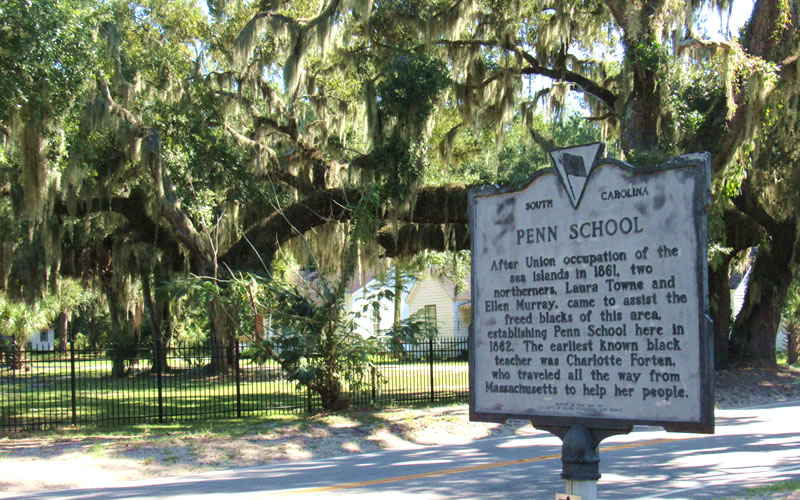
By Andy Brack, editor and publisher | Sandwiched between the Southern stains of slavery and oppressive Jim Crow laws were a few years of mostly forgotten history, the Reconstruction era.
 In the months ahead, the Beaufort area is poised to become the nation’s hub for rediscovering and understanding the promise of Reconstruction to newly-freed slaves as they started to engage in America by voting, buying land and living in freedom.
In the months ahead, the Beaufort area is poised to become the nation’s hub for rediscovering and understanding the promise of Reconstruction to newly-freed slaves as they started to engage in America by voting, buying land and living in freedom.
A recently-passed massive public lands bill that pumps millions of dollars into land and water conservation projects across the nation will have a transformational impact on Beaufort and the state: It will give South Carolina its second national park, the Reconstruction Era National Park. The bill is awaiting a presidential signature.
Hundreds of thousands of Americans annually will visit the new park as well as Beaufort, Port Royal and St. Helena Island to witness what some call the nation’s second founding as formerly enslaved African Americans became citizens. The park, named a national monument just two years ago as President Barack Obama left office, will fuel economic growth in the region as visitors explore what Reconstruction actually meant mostly in the days after the Civil War.

Beaufort Mayor Billy Keyserling, central champion of efforts to establish the national park, says Beaufort is recognized as the best place to share the full story of Reconstruction because it started earlier – in 1861 when white planters abandoned St. Helena Island after Union forces captured the area – and ended later than other parts of the country.
“One hundred and fifty years have gone by and no one has talked about a period of history where people were freed from enslavement, granted birthright citizenship and given the right to vote,” he said in an exclusive interview about changes coming to the region.
“Historians with the National Park Service found that Beaufort had the most complete story [about Reconstruction] because buildings were not burned, people were not killed, the white planters abandoned the land and there was a vacuum of power” filled by newly-free black Americans governing and participating in democracy. Beaufort, he said, fulfilled a dream of telling the important story of Reconstruction more than any other place.
That’s relevant today because the three constitutional amendments passed after the Civil War – the 13th, 14th and 15th – continue to be part of the national debate. The 13th Amendment abolished slavery, a shameful part of the past that still muddies the current political and social climate of the South. The 14th Amendment established birthright citizenship, which has been challenged by the political right in debates about immigration. The 15th Amendment originally gave African American men the right to vote, a right under assault still by those who want to make it harder, not easier, for some Americans to vote.
The Beaufort park’s embrace of Reconstruction history will add context and help many Americans better understand the freedoms they have.
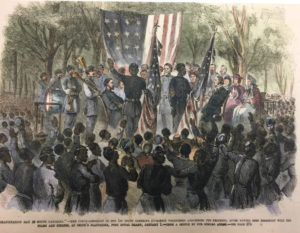
The new Reconstruction Era National Park will be anchored by four areas but will include 100 sites around Beaufort County. Anchor sites include the Brick Church, a church built by slaves, abandoned by planters and kept going by freed blacks. Then there’s the Penn Center, first a school for freed blacks that today continues as a community connector. Also important are the old firehouse on Scott Street in Beaufort, which will serve as the park’s visitor’s center, and the site of the former Camp Saxton, now the naval hospital. It’s where the largest single group of freed slaves gathered in 1863 for a reading of the Emancipation Proclamation.
“History helps unlock the unknown for many people’s sources for racial animosity that we now are living with it unnecessarily,” said Columbia leader Bud Ferillo, who has worked with Keyserling to move the park forward.
In the months ahead, Beaufort will change and help provide a better understanding of American history. To keep its community integrity, it will need to learn over-development lessons from places like Williamsburg and Charleston.
“We’re out looking for money to make Beaufort the center of education to tell the untold stories and correct the mistold stories of a period of history that essentially very few people have even heard about,” Keyserling said.
- To learn more about Beaufort’s crucial role in history and to keep up with developments, go to: ReconstructionBeaufort.org.
- Have a comment? Send to: feedback@statehousereport.com.
SPOTLIGHT: S.C. Farm Bureau
 Statehouse Report is provided for free to thousands of subscribers thanks to the generosity of our underwriters. Today we shine a spotlight on our newest underwriter, S.C. Farm Bureau. It is a grassroots, non-profit organization that celebrates and supports family farmers, locally-grown food and rural lands through legislative advocacy, education and community outreach.
Statehouse Report is provided for free to thousands of subscribers thanks to the generosity of our underwriters. Today we shine a spotlight on our newest underwriter, S.C. Farm Bureau. It is a grassroots, non-profit organization that celebrates and supports family farmers, locally-grown food and rural lands through legislative advocacy, education and community outreach.
S.C. Farm Bureau’s alliance of nearly 100,000 members includes everyone from foodies and fishermen to lawyers, restaurateurs, entrepreneurs, community leaders, and of course, farmers. By connecting farmers to the larger community, the organization cultivates understanding about agriculture’s importance to our local economies. The S.C. Farm Bureau explains its mission: “We deepen our collective knowledge of who, where and how food grows. We empower people to make informed choices. We grow mutually-beneficial relationships. And, we ensure the future of the family farms, locally-grown food and the rural South Carolina lands we love.”
- To learn more about S.C. Farm Bureau’s programs, click here.
- To view media and publications, click here
- For policy and legislation, click here.
MY TURN: Senate should pass Energy Freedom Act promptly

By John Tynan, special to Statehouse Report | Conservation Voters of South Carolina and a coalition of over 25 solar industry groups, conservation organizations, and clean energy advocates in January launched a “100 Day Clean Energy” campaign urging state lawmakers to pass legislation to inject competition into South Carolina’s energy markets in the first 100 days of 2019.
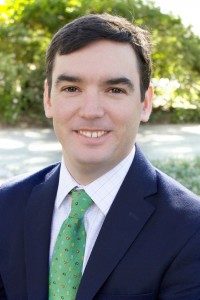
We were driven by the urgency to protect the billions of dollars of private investment in large-scale solar projects which need certainty needed to bring them to completion and also by the threat of losing thousands of solar jobs if current net metering programs were allowed to expire in March.
We’re now at the 60-day mark, and, while we’re not over the finish line yet, I’m optimistic about the progress we’ve made with the recent compromise hammered out by the unanimous (110-0) passage of the Energy Freedom Act (H.3659) in the S.C. House of Representatives.
Make no mistake. A unanimous vote speaks volumes about true compromise. Passage of the Energy Freedom Act is the result of thoughtful work led by House staff and key Labor Commerce and Industry Committee members as they sought buy-in from all interested parties – the solar industry, the utilities and conservation organizations. From the vote on the House floor, it looks like they succeeded.
Several provisions with positive implications for the state’s clean energy industry were included in the compromise, including the elimination of rooftop net metering and solar leasing caps. Eliminating these market-killing caps is a solid step in the right direction because it makes solar an option for more South Carolinians and gives solar owners fair credit for energy generated on their rooftops.
But the compromise deferred long-term resolution of rooftop solar rate structures to the state Public Service Commission (PSC), striking a balance that addresses the most pressing issues while outlining a long-term pathway for continued solar growth and individual energy choice.
For large-scale solar projects, the Energy Freedom Act compromise would ensure that independent power producers who can create clean energy at or below the price of utility power can secure at least 10-year contracts for these low-cost power options. And, similar to the rooftop solar compromise, it defers the complex, long-term questions regarding large-scale solar to the PSC.
The certainty of a minimum contract length cannot be understated. It’s a requirement for stabilizing discussions between independent power providers and the utility monopolies as well as for landowners and developers who want to build cost-efficient solar installations that reduce energy costs for ratepayers.
We cannot advance a clean energy future without sound principles and processes for energy planning and procurement. While the compromise language does not contain the level of utility accountability that we sought, it does establish greater utility transparency and stakeholder involvement in the planning and procurement processes for new generation. In the wake of the V.C. Summer power plant failure, every step towards transparency, accountability and long-term planning in the energy generation space should be celebrated.
The compromise House bill contains a number of other significant provisions: consumer protections, a voluntary program to allow corporate and industrial customers to directly contract for clean energy, and community solar programs to ensure all ratepayers – regardless of income – can access the benefits of solar.
With all of these aspects, the compromise bill outlines an overarching goal, but relies on the PSC to work with stakeholders to craft the long-term, durable solutions that are greatly needed.
On the whole, the Energy Freedom Act advances key policies that will expand solar access for all, increase energy market competition, and move South Carolina closer to the clean energy future it deserves. Thanks is due to the collaborative leadership of the House and particularly S.C. Reps. Peter McCoy (R-Charleston), Mike Forrester (R-Spartanburg), Bill Sandifer (R-Oconee), Russell Ott (D-Calhoun), Nathan Ballentine (R-Lexington), and Gary Clary (R-Pickens).
We hope the Senate will recognize the unanimous approval of H.3659 shows that this bill is a true compromise and a path forward. As the Senate reviews the bill, the clock is ticking on 3,000 solar jobs in our state, greater access to solar across the state and relief for ratepayers.
As we approach the March 15 expiration of the solar caps and the April 10 end to the 100 Day Agenda campaign, we urge all parties to embrace this compromise.
John Tynan is executive director of the Conservation Voters of South Carolina and is based in Columbia. More: CVSC. Have a comment? Send to: feedback@statehousereport.com.
FEEDBACK
ERA effort pushes forward
To the editor:
![]() Thank you so much for the great article on the ERA! [Brack, 222]. This group represents thousands of women and men in South Carolina who support ratification of the ERA as a basic right of our society. We are working to raise awareness and get people involved, and this article is just the kind of information we need out there.
Thank you so much for the great article on the ERA! [Brack, 222]. This group represents thousands of women and men in South Carolina who support ratification of the ERA as a basic right of our society. We are working to raise awareness and get people involved, and this article is just the kind of information we need out there.
Thank you (and Jennet!) for debugging the fears of the past. Please join us on Facebook page at Equal Means ERA and add us to your tags in the future.
— Barbara Fry, Mount Pleasant, S.C.
We need more communication to break down barriers
To the editor:
Excellent article [Brack, 2/8]. I’m not sure how we do this, but we do need to talk to persons who are different, not at them.
Since I have few personal relationships with people of color, I try to look AT a person of color in a store or on the sidewalk and smile! Small gesture I know, but it is a start. I would love to be part of a dialogue, but I don’t know how to do that.
— Peggy Baker, Taylors, S.C.
Send us your thoughts … or rants
We love hearing from our readers and encourage you to share your opinions. But you’ve got to provide us with contact information so we can verify your letters. Letters to the editor are published weekly. We reserve the right to edit for length and clarity. Comments are limited to 250 words or less. Please include your name and contact information.
- Send your letters or comments to: feedback@statehousereport.com
MYSTERY: Look for a telling clue for this mystery
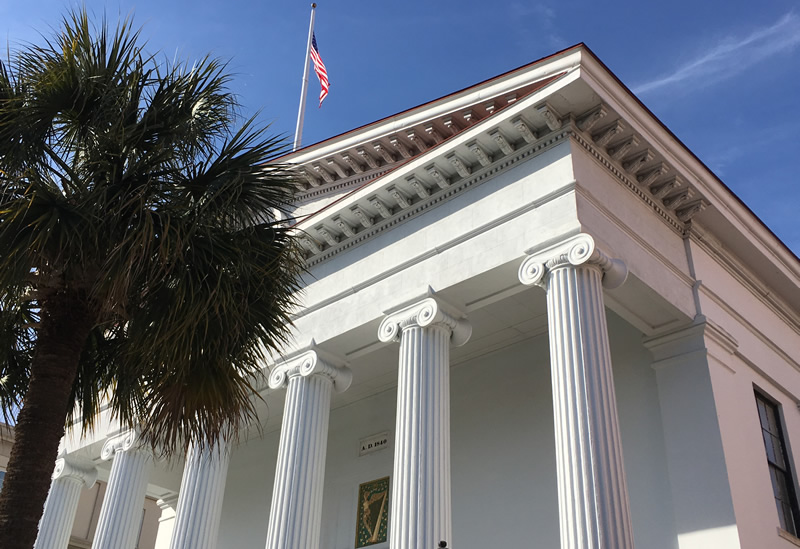
There’s a giveaway clue in this photo, but you’ll have to look closely. Send your guess to feedback@statehousereport.com. And don’t forget to include your name and the town in which you live.
Our previous Mystery Photo
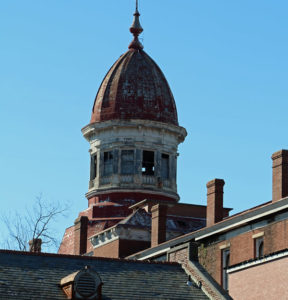 Our Feb. 22 mystery, “Top of building shows wear and tear,” was a photo submitted by loyal reader Bill Segars of Hartsville. It shows the top of the old Babcock Building at the former S.C. State Hospital in Columbia, or what some readers called the old Bull Street lunatic asylum!
Our Feb. 22 mystery, “Top of building shows wear and tear,” was a photo submitted by loyal reader Bill Segars of Hartsville. It shows the top of the old Babcock Building at the former S.C. State Hospital in Columbia, or what some readers called the old Bull Street lunatic asylum!
Congratulations to all photo detectives who correctly identified this mystery: Faith Line of Anderson; Robert Ariail of Camden; Charlie Davis of Aiken; Jay Altman, Elizabeth Jones, Elizabeth Harmon and Karen Owens, all of Columbia; Gwen Strickland of Marion; and George Graf of Palmyra, Va.
Graf provided more context: “According to palmettoweekend.com: Built between 1822 and 1827, the Babcock Building was the South Carolina Lunatic Asylum housing and treating the state’s mentally ill for nearly 200 years. The last of the asylum’s patients were removed in 1990 and the site was completely abandoned in 1996, the elements have worn away at the looming structure. Once a city within a city, the 181- acre asylum property is in the process of rebirth. Just next-door to the Babcock building the Columbia Fireflies now play baseball, tech companies are moving in, a church has plans to move into the properties former power station.”
- Send us a mystery: If you have a photo that you believe will stump readers, send it along (but make sure to tell us what it is because it may stump us too!) Send to: feedback@statehousereport.com and mark it as a photo submission. Thanks.
S.C. ENCYCLOPEDIA
HISTORY: Reconstruction
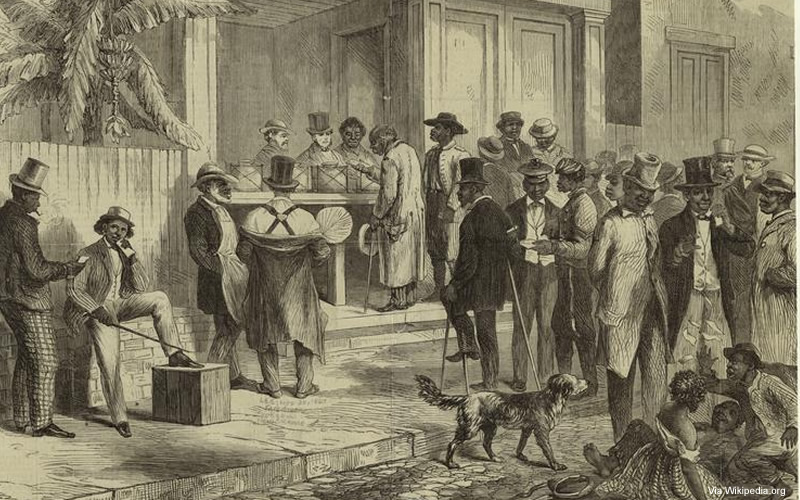
S.C. Encyclopedia, Part 1 of 2 | The final defeat of the Confederacy in 1865 brought an important and difficult problem for the federal government: how were the defeated states to be brought back into the Union? Most agreed that this should be accomplished as rapidly as possible, but not so rapidly that the planter elite that had led the South in secession would be able to renew the rebellion or reverse the results of the war. The South would have to remain under federal control until it was deemed safe to leave matters to the southern state governments. This probationary period of federal control was termed “Reconstruction.” To some contemporaries, the reconstruction of the Union was complete, and Reconstruction ended when the South’s representatives were readmitted to Congress in 1868.
In modern parlance, however, the period of President Andrew Johnson’s control of the process of readmission is termed “provisional Reconstruction” or “Presidential Reconstruction.” The following period, marked by the control of southern policy by Congress, is termed “Congressional Reconstruction” or “Radical Reconstruction,” after the Radical Republicans who dominated Congress. The duration of the Reconstruction period varied among southern states, depending on when they were readmitted to the Union by Congress, or when they reestablished Democratic rule. In South Carolina, Reconstruction lasted from 1865 to 1877, with the break between Presidential and Congressional control occurring in 1867 when the freedmen were registered to vote for delegates to a constitutional convention.
President Johnson’s plan for Reconstruction would have left the antebellum elite in control of the southern states and would not have included black suffrage. It did, however, require that southern whites accept the results of the war—in particular the abolition of slavery. The plan did not sit well with Republicans in Congress, who considered it too lenient. Northerners blamed the war on southern planters, who used their control of black labor to control their states. In a serious miscalculation of northern sentiment, southern leaders passed Black Codes, laws restricting the activities and occupations of African Americans and remanding them to the control of their former owners.
South Carolina’s code, enacted in December 1865, was typical: there were stringent regulations on work and travel that applied only to African Americans and a system of courts that tried only African Americans. The Black Codes were invalidated by the state’s military governor, who saw them as reestablishing slavery in everything but name. South Carolinians then lost their last chance to avoid Congressional Reconstruction by refusing to ratify the Fourteenth Amendment, which among other provisions would have made African Americans citizens of the state and punished the state if it did not give them the vote.
Congressional Republicans capitalized on northern outrage in 1867 by passing the Reconstruction Acts, which mandated the registration of all adult males in the South as voters and the holding of elections for delegates to a constitutional convention. In South Carolina, of 124 delegates to the 1868 convention, 73 were black or of mixed ancestry, and all were Republicans. The constitution they wrote was modeled on those of northern states on matters such as local government, women’s rights, and public education, but it surpassed them in its commitment to racial equality. It extended voting rights to all men; proposals to limit voting to the literate, the educated, or those who paid a poll tax were all voted down overwhelmingly.
Under the new constitution the state’s African Americans, who comprised sixty percent of the voting population, had the voting strength to ensure Republican control of the state government. This domination allowed the passage of more legislation to improve the condition of the freedmen than was accomplished in any other state. An example was the creation in 1869 of the South Carolina Land Commission, an institution unique to the state, whose purpose was to make landownership possible for poor blacks.
Unfortunately, one-party domination also led to a lack of accountability on the part of many Republican officeholders. Corruption flourished in the state legislature and in the executive offices of the state. In one instance in 1870–1871, the state’s financial board secured the authority to print and sell $1 million in state bonds; there were to be $1,000 bonds numbered 1 to 1,000. Members of the board printed two sets— both numbered 1 to 1,000—and sold both sets. They kept no records of their transactions and were caught only when a New York investment firm came into possession of two bonds with the same number on both. Partly as a result of such malfeasance, and partly because of legitimate increases in expenditures such as the creation of a public school system from scratch, state budgets skyrocketed during Reconstruction and the state slipped further and further into debt.
- To be continued in the next issue …
— Excerpted from an entry by Hyman S. Rubin III. This entry may not have been updated since 2006. To read more about this or 2,000 other entries about South Carolina, check out The South Carolina Encyclopedia, published in 2006 by USC Press. (Information used by permission.)
ABOUT STATEHOUSE REPORT
Statehouse Report, founded in 2001 as a weekly legislative forecast that informs readers about what is going to happen in South Carolina politics and policy, is provided to you at no charge every Friday.
- Editor and publisher: Andy Brack, 843.670.3996
- Statehouse correspondent: Lindsay Street
More
- Mailing address: Send inquiries by mail to: P.O. Box 22261, Charleston, SC 29407
- Subscriptions are free: Click to subscribe.
- We hope you’ll keep receiving the great news and information from Statehouse Report, but if you need to unsubscribe, go to the bottom of the weekly email issue and follow the instructions.
- © 2019, Statehouse Report. All rights reserved.















 We Can Do Better, South Carolina!
We Can Do Better, South Carolina!